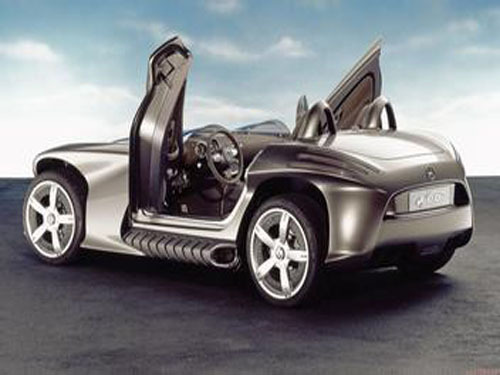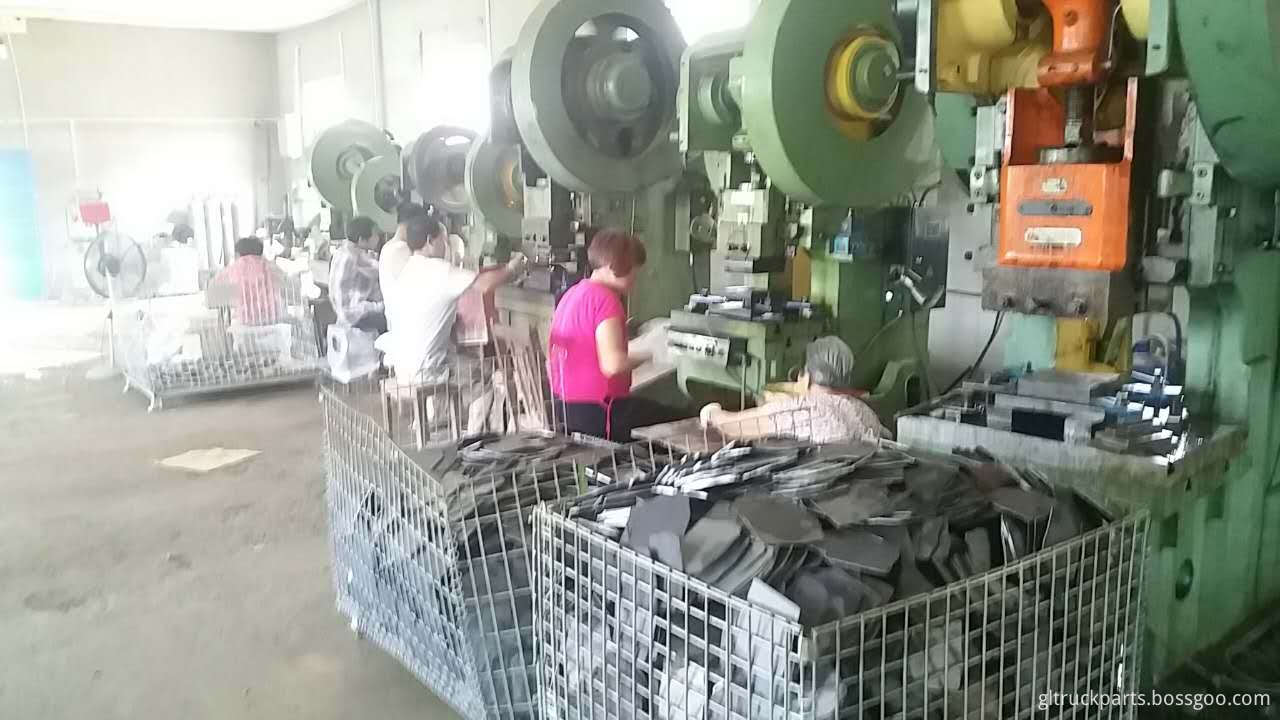
At present, with the development of lightweight, intelligent and electrified vehicles, the global automotive electronics industry has ushered in a golden period of development. It is predicted that the growth rate of China's automotive electronics market in 2015 will be 13.02%, and the market scale is expected to exceed 400 billion yuan. In this market, innovation is highly valued, new products and new applications continue to emerge, and automotive electronics technology is changing the face of the entire automobile.
Judging from the automotive electronics market segments, automotive electronics is no longer a “stunt†or “chicken ribâ€, but is down to earth and pays more attention to user experience. In view of domestic consumers’ preferences for interactive, communication and entertainment services, the future of communication and entertainment systems will be rapid. Growth, showing features of greater functionality, convenience, and greater interconnectivity. In terms of body electronics, various safety control systems such as safe driving assistance systems and collision prediction systems will focus on the development in 2015 in light of the current development of new energy vehicles and unmanned driving technologies, as well as consumer demand for comfort and safety. And get a more extensive application.
The author believes that the future growth of the automotive electronics market and technological innovation will bring better opportunities for domestic automotive electronics related manufacturers. This opportunity will promote a higher degree of market concentration in the parts and components industry, a higher degree of specialization in parts and components companies, and play a more important role in the technology market than the vehicle manufacturer in the market segment.
Car Electronics: Down-to-earth Pay More Attention to User Experience More Functionality, More User-friendly
The in-vehicle infotainment system has evolved from the original radios and cassettes to today's diversified intelligent interactive entertainment systems. It is no longer simply listening to music, but it can satisfy people listening to music, watching videos, making phone calls, sending and receiving information, and viewing road conditions. Navigation and other needs. However, as the function increases, the contradiction between in-vehicle entertainment and driving safety becomes increasingly prominent. At the same time, other than music, other functions are inconvenienced or cannot be realized, and are considered by consumers as “chicken ribsâ€, which are only used by automobile manufacturers. Marketing gimmicks.
This situation is changing. 2014 was a year in which automotive electronics grew rapidly. This year, the industry explored how to better meet the needs of consumers in terms of technology, products, and functions. Although this is impetuous, it has clearly defined the “user experience†center. Car electronics are no longer "stands" but more functional. This laid a good foundation for the development of onboard electronics this year, and also heralded the development direction of onboard electronics this year: The new generation of on-board entertainment information systems is not only a change in entertainment methods, but also a change in user experience methods and human-computer interaction methods.
This trend of change can be seen from the latest release of car electronics products (systems). For example, Ford's new SYNC 3 system, the new system includes new features such as voice control integration technology, in-vehicle push, software download, etc. In addition, SYNC 3 allows application developers to call including speed, acceleration, odometer information and vehicle positioning, etc. Information, integrated with the application brings users a more comprehensive and personalized interactive connection experience. The system will be equipped with new Ford models that will be available this year.
General OnStar, the industry's "big brother," has also added new features that are closer to users: the Safe Driving Assessment Program, At Your Service, and the "Prophecy" feature. The safe driving evaluation project evaluates the driver’s driving behavior in 90-day cycles and compares it with other drivers. If the score is high, coupons may be obtained. This service will be standard on the 2016 GM’s GM models. At Your Service is Ong-Sing's measure of more penetration into the driver's life. The “Prognostication†feature is Ongxing’s new vehicle condition monitoring function. The initial system will monitor and report whether the battery, starter motor and fuel system on the vehicle are There are problems, and there will be more parts for system monitoring by 2016. Delphi gave a full set of integrated solutions for human-computer interaction, including eye contact, physical buttons, voice control, touch, and gestures.
Connectivity becomes a veritable personal label
When it comes to interconnectivity, the word that has to be mentioned is “car networkingâ€. From 2010 familiarity to 2014, the concept of car networking has long been buzzed by the domestic automotive electronics industry, but the service of car networking has not been maintained. Can really be implemented on vehicle products.
At present, the most important form of realization of car networking is the interconnection of mobile phones and car machines. As the computing power of smart phones becomes more powerful, more applications are downloaded to mobile phones. The automotive electronics industry has begun to explore a new set of solutions. Mobile phones and cars are interconnected to enhance the user's driving experience.
Bosch's MySpin system is a typical example of interconnectivity. The system is also applicable to both Android and IOS operating systems. Through MySpin, users can directly project the apps in the smartphone to the display of the car entertainment system, thus implementing App's Simple operation and control. At present, the system has been applied to Jaguar models and will be equipped with more models in the future.
At this year's 2015 CES, Mercedes-Benz launched a Pebble watch that can be interconnected with Mercedes-Benz models. The watch must be connected to the iPhone to match the car to get the car's information. However, when the vehicle is running, the Pebble watch can use vibration to remind the driver of traffic accidents in front of the road, road repairs and other real-time traffic information.
These products represent a trend that shows that connectivity has become a veritable personal label for on-board electronics. This year, along with the industry's continued exploration of the Internet of Vehicles, this feature will become more and more obvious, along with the industry that comes with this feature. The model is not yet mature. Therefore, exploring the connection mode of the vehicle and applying App in the interconnected system will also be a problem that companies in the industry have vigorously explored.
In addition, the Internet will inevitably produce a large amount of data. Last year, companies have developed big data on-board computers to collect data and analyze users' preferences, emotions, and schedules, so as to provide users with customized functions and services. Therefore, the author believes that there will be further development in the application of big data collection and customized on-board service provision this year.
Body Electronics: Safety Control Products Concentrate and Rapidly Develop Active Safety
In 2009, the European Union issued Regulations (EC) 661/2009, which proposed new technical requirements for automobiles and stipulated that some models must have electronic stability control systems, tire pressure monitoring systems, advanced emergency braking systems, and lane departure warning systems. In addition, the United States has paid more attention to safety hazards arising from reversing vehicles in recent years. The “Children’s Traffic Safety Act†mandates that vehicles be equipped with reversing video functions. This bill may be implemented this year. Although the current domestic vehicle active safety technology promotion and regulations have only just begun, but this is the trend of the times, relevant experts predict that in the next five years, the market capacity of domestic automotive active safety applications will exponentially increase, far exceeding other technologies.
In recent years, names such as the vehicle body stabilization system, front vehicle collision warning, lane departure warning, and automatic parking have frequently come into sight. For example, the new Audi A7's traffic jam assist system can help vehicles in a congested traffic stream with no more than 40 miles. Boost launches automatic parking assistance and traffic jam assistance systems. In traffic jams, it can control longitudinal and lateral movements of vehicles by combining radar and video technology. TRW owns traffic congestion assistance, highway autopilot, A series of active safety technologies such as emergency steering assistance and pedestrian protection.
Based on this, the author believes that this year and the future, the application of these active safety technologies and products will be more and more, and the initiative and safety will be improved to a higher level. Advanced automotive driving assistance systems and other mainstream body electronic products will It will enter the fast-growing period and will penetrate from high-end to low-end models.
The development of new energy vehicles drives the rapid growth of electronic control systems
With the increase of environmental protection pressures and increasingly stringent fuel consumption limits, new energy vehicles have developed rapidly. The country has successively introduced a number of policies to promote and support the development of new energy vehicles. There are significant differences between new energy vehicles and traditional automobiles, and this difference determines that the applied automotive electronic products are also different.
The electronic control systems of traditional automobiles are mainly based on power control systems represented by engine control and transmission control. However, the electronic control systems of new energy vehicles mainly include motor control systems and power battery management systems. Therefore, as new energy vehicles are fast Development will inevitably drive the rapid growth of electronic control systems such as motors and batteries.
Give birth to the huge potential of the chip and sensor market
At the just-concluded 2015CES, an Audi A7 self-driving concept car traveled all the way from Silicon Valley to Las Vegas and completed a 900-kilometer open road test drive. Currently, both Nevada and California in the United States have successively approved unmanned cars on the road for testing, and Google has obtained the special license for the first U.S. driverless car in the United States.
Not only driverless, advanced driver assistance systems, infotainment systems, and many other functions can be achieved without the two heroes behind the semiconductor chip and sensor technology. They have opened up entirely new areas for safe car driving. For example, Texas Instruments has provided a series of semiconductor technologies for automobiles, from infotainment solutions, key active and passive safety technologies and driver assistance systems, to hybrid/powertrain solutions, and wireless connectivity technologies. For safety driving, Texas Instruments has introduced The TDA3xSoC, which is the smallest ADAS module on the market today.
Infineon can provide customers with automotive grade power semiconductors and modules from low-voltage 12V, 48V, weakly mixed, mixed, strong-mixed, plug-in to pure electric driving all automotive voltage ranges, and supports 75 BMW core semiconductor components. The "i3" and "i8" electric vehicles help them achieve efficient power transmission. Broadcom announced the next generation of automotive Ethernet chips optimized for low-power automotive applications at 2015CES.
It is easy to see from the actions of international semiconductor companies in arranging the automotive electronics market in 2015. With the wide application of automotive electronic products in 2015, the chip and sensor market will witness rapid growth and huge market potential. Domestic chip companies that have been at a disadvantage can seize opportunities. To seek opportunities for development.
Jiaxing Ganland Auto Parts Co., Ltd 's one of the main products is Refrigerated Truck Parts. It contains Door Hinges, Toggle Latch, Door Hooks, Sliding Rails, 304 Stainless Steel Meat Single Hook, Meat Double Hook etc.
We have many big clients in domestic, like CIMC, DONGFENG etc. Also we have many clients overseas. For more information, you are warmly welcome to send us an email. We will feedback to you ASAP.

Refrigerated Truck Parts Series
Hanging Sliding Rail,Stainless Steel Single Meat Hook,Transportation Truck Meat Hanging Hook,Refrigerated Truck Door Hinge
Jiaxing Ganland Auto Parts Co., Ltd. , http://www.gltruckparts.com